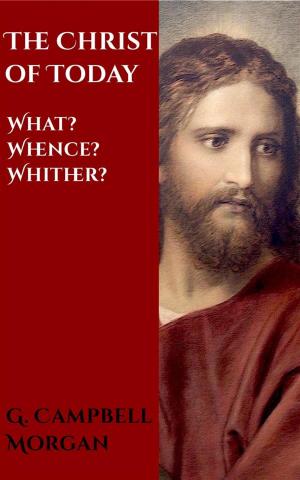The Purposes of the Incarnation
Nonfiction, Religion & Spirituality, Christianity, Christian Literature| Author: | G. Campbell Morgan | ISBN: | 1230001935035 |
| Publisher: | CrossReach Publications | Publication: | September 26, 2017 |
| Imprint: | Language: | English |
| Author: | G. Campbell Morgan |
| ISBN: | 1230001935035 |
| Publisher: | CrossReach Publications |
| Publication: | September 26, 2017 |
| Imprint: | |
| Language: | English |
The title of this meditation marks its limitation, and indicates its scope.
Here is no attempt at defense of the statement of the New Testament that "the Word was made flesh." That is taken for granted as true.
Moreover, here is no attempt to explain the method of the Holy Mystery. That is recognized as Mystery: a fact revealed which is yet beyond human comprehension or explanation.
The scope is that of considering in broad outline the plain teaching of the New Testament as to the purposes of the Incarnation.
Its final limitation is that of its brevity. If, however, it serve to arouse a deeper sense of the wonder of the great central fact of our common Faith, and thus to inspire further meditation, its object will be gained.
The Incarnation
The whole teaching of Holy Scripture places the Incarnation at the center of the methods of God with a sinning race.
Toward that Incarnation everything moved until its accomplishment, finding therein fulfillment and explanation. The messages of the prophets and seers and the songs of the psalmists trembled with more or less certainty toward the final music which announced the coming of Christ. All the results also of these partial and broken messages of the past led toward the Incarnation.
It is equally true that from that Incarnation all subsequent movements have proceeded, depending upon it for direction and dynamic. The Gospel stories are all concerned with the coming of Christ, with His mission and His message. The letters of the New Testament have all to do with the fact of the Incarnation, and its correlated doctrines and duties. The last book of the Bible is a book, the true title of which is The Unveiling of the Christ.
Not only the actual messages which have been bound up in this one Divine Library, but all the results issuing from them, are finally results issuing from this self-same coming of Christ. It is surely important, therefore, that we should understand its purposes in the economy of God.
There is a fourfold statement of purpose declared in the New Testament: the purpose to reveal the Father; the purpose to put away sin; the purpose to destroy the works of the devil; and the purpose to establish by another advent the Kingdom of God in the world.
Christ was in conflict with all that was contrary to the purposes of God in individual, social, national, and racial life. There is a sense in which when we have said this we have stated the whole meaning of His coming. His revelation of the Father was toward this end; His putting away of sin was part of this very process; and His second advent will be for the complete and final overthrow of all the works of the devil.
The title of this meditation marks its limitation, and indicates its scope.
Here is no attempt at defense of the statement of the New Testament that "the Word was made flesh." That is taken for granted as true.
Moreover, here is no attempt to explain the method of the Holy Mystery. That is recognized as Mystery: a fact revealed which is yet beyond human comprehension or explanation.
The scope is that of considering in broad outline the plain teaching of the New Testament as to the purposes of the Incarnation.
Its final limitation is that of its brevity. If, however, it serve to arouse a deeper sense of the wonder of the great central fact of our common Faith, and thus to inspire further meditation, its object will be gained.
The Incarnation
The whole teaching of Holy Scripture places the Incarnation at the center of the methods of God with a sinning race.
Toward that Incarnation everything moved until its accomplishment, finding therein fulfillment and explanation. The messages of the prophets and seers and the songs of the psalmists trembled with more or less certainty toward the final music which announced the coming of Christ. All the results also of these partial and broken messages of the past led toward the Incarnation.
It is equally true that from that Incarnation all subsequent movements have proceeded, depending upon it for direction and dynamic. The Gospel stories are all concerned with the coming of Christ, with His mission and His message. The letters of the New Testament have all to do with the fact of the Incarnation, and its correlated doctrines and duties. The last book of the Bible is a book, the true title of which is The Unveiling of the Christ.
Not only the actual messages which have been bound up in this one Divine Library, but all the results issuing from them, are finally results issuing from this self-same coming of Christ. It is surely important, therefore, that we should understand its purposes in the economy of God.
There is a fourfold statement of purpose declared in the New Testament: the purpose to reveal the Father; the purpose to put away sin; the purpose to destroy the works of the devil; and the purpose to establish by another advent the Kingdom of God in the world.
Christ was in conflict with all that was contrary to the purposes of God in individual, social, national, and racial life. There is a sense in which when we have said this we have stated the whole meaning of His coming. His revelation of the Father was toward this end; His putting away of sin was part of this very process; and His second advent will be for the complete and final overthrow of all the works of the devil.















